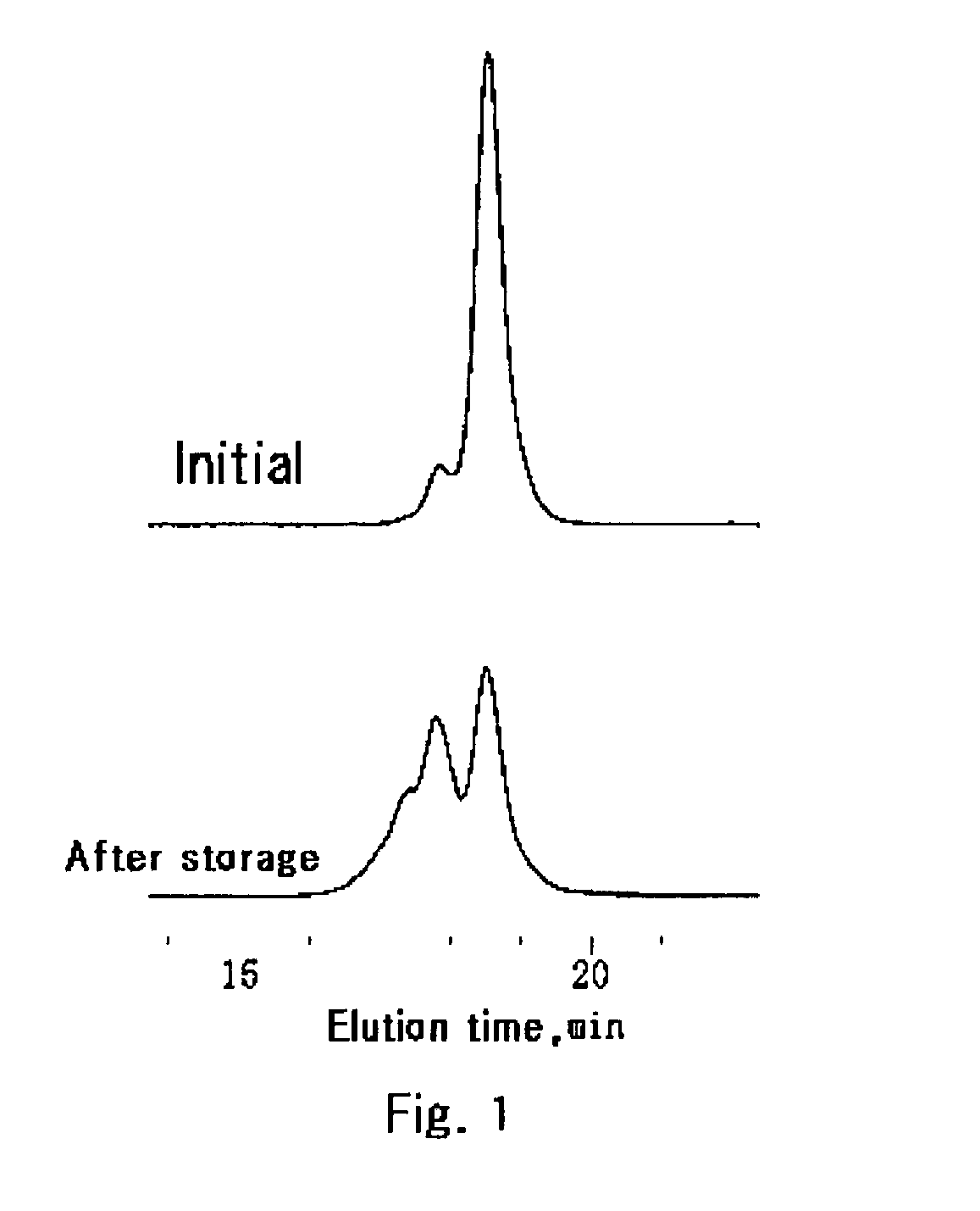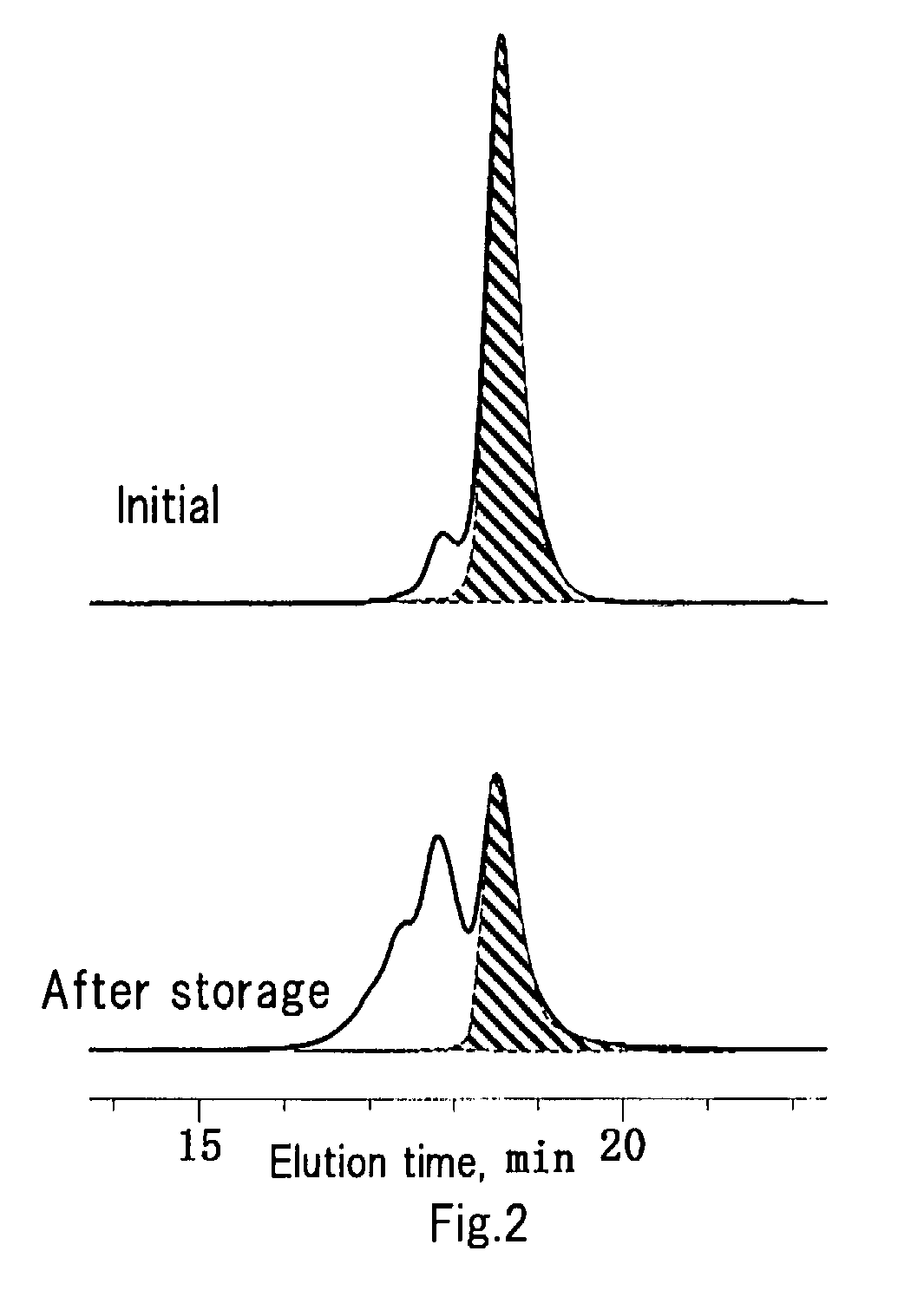Method of preparing disilanol compound and method of storing disilanol compound
- Summary
- Abstract
- Description
- Claims
- Application Information
AI Technical Summary
Benefits of technology
Problems solved by technology
Method used
Image
Examples
examples
[0047]The present invention will be explained with reference to the following Examples, but not limited thereto.
[0048]In a one-liter four-necked flask equipped with a stirring rod and a thermometer, were placed 20 g of water, 20 g of triethylamine, and 40 g of 1,3-bistrifluoromethylbenzene and cooled to 5° C. The mixture was stirred while maintaining the temperature at 5° C. In a 500-ml dropping funnel, were placed 300 g of the compound represented by the following formula (5) and 150 g of 1,3-bistrifluoromethylbenzene, and the inlet of the funnel was sealed with nitrogen gas. Then, the mixture of the compound of the formula (5) and 1,3-bistrifluoromethylbenzene was dropped in the four-necked flask while maintaining a temperature of the contents of the four-necked flask at a temperature of from 5 to 10° C.
[0049]In the formula (5), a and b are integers of 1 or larger with an average of a+b is 90.
[0050]After completing the dropping, the reaction mixture in the flask was stirred at roo...
example 2
[0061]In a one-liter four-necked flask equipped with a stirring rod and a thermometer, were placed 20 g of triethylamine, 200 g of 1,3-bistrifluoromethylbenzene and 300 g of the compound of the aforesaid formula (5) and stirred at room temperature for 30 minutes. The mixture obtained was cooled to 3° C. To the mixture, 20 g of water was added via a funnel placed at the neck on top of the flask while stirring the mixture thoroughly. The addition of water caused an increase in a temperature of the reaction mixture in the flask to 9° C. At that temperature, the reaction mixture was stirred for 30 minutes. Then, the cooling was stopped, and the temperature of the reaction mixture was allowed to rise to room temperature. Subsequently, 6.0 g of calcium carbonate was added ro the reaction mixture and stirred for 1 hour. Then, a Dimroth was attached to the flask and the reaction mixture was heated at a temperature of 90° C. for 2 hours while stirring. After cooling the reaction mixture to r...
example 3
[0063]To 100 g of the compound of the formula (6) prepared in Example 1, 0.5 g of tri-n-butylamine was added and stirred for 1 hour.
PUM
| Property | Measurement | Unit |
|---|---|---|
| Molar ratio | aaaaa | aaaaa |
Abstract
Description
Claims
Application Information
 Login to View More
Login to View More - R&D Engineer
- R&D Manager
- IP Professional
- Industry Leading Data Capabilities
- Powerful AI technology
- Patent DNA Extraction
Browse by: Latest US Patents, China's latest patents, Technical Efficacy Thesaurus, Application Domain, Technology Topic, Popular Technical Reports.
© 2024 PatSnap. All rights reserved.Legal|Privacy policy|Modern Slavery Act Transparency Statement|Sitemap|About US| Contact US: help@patsnap.com










